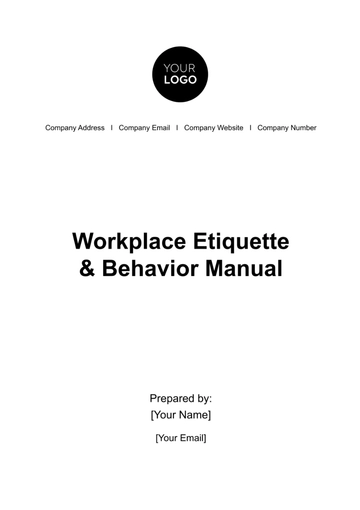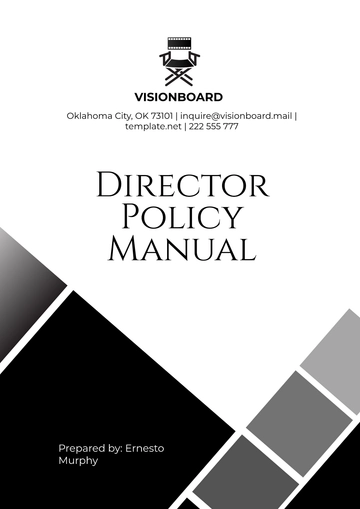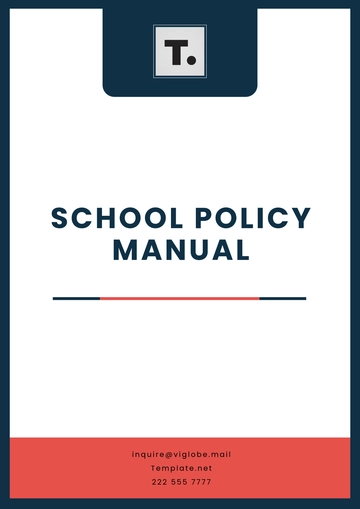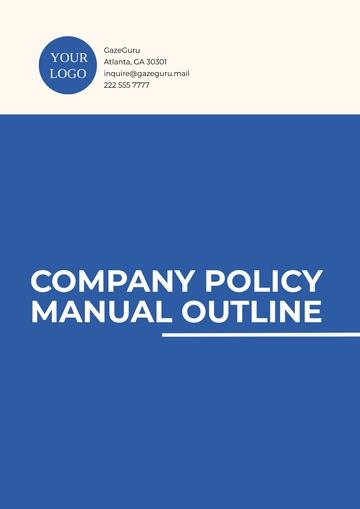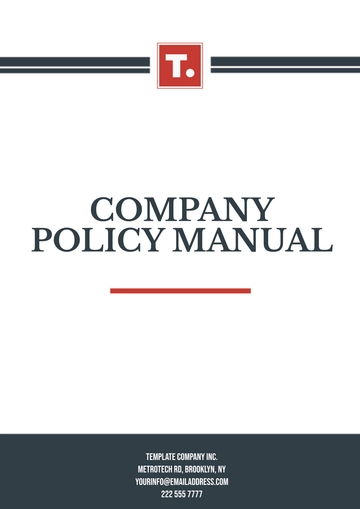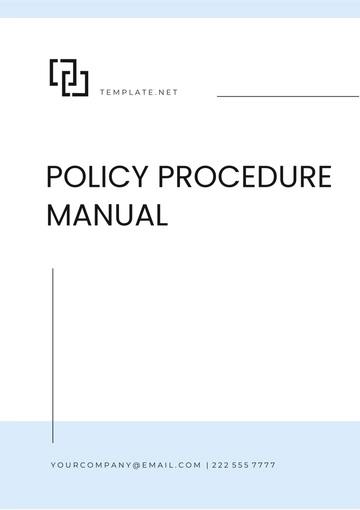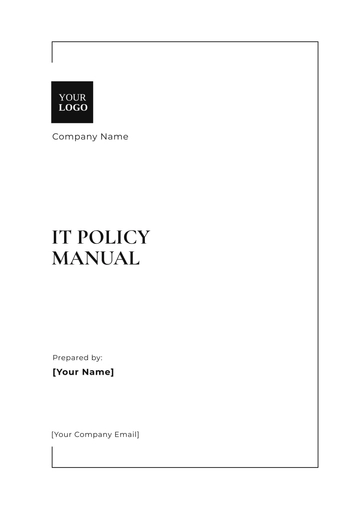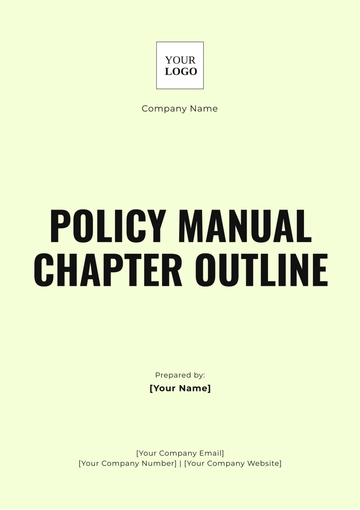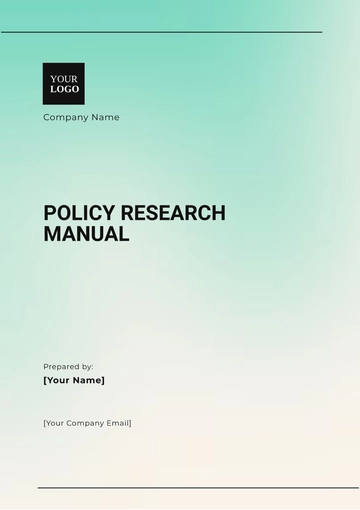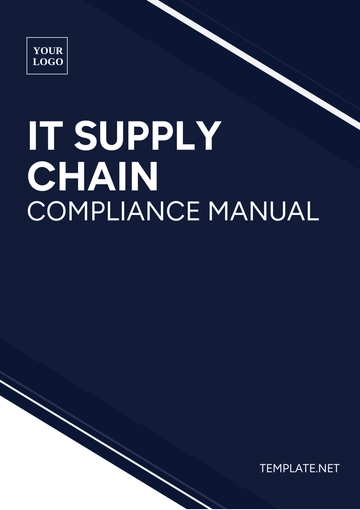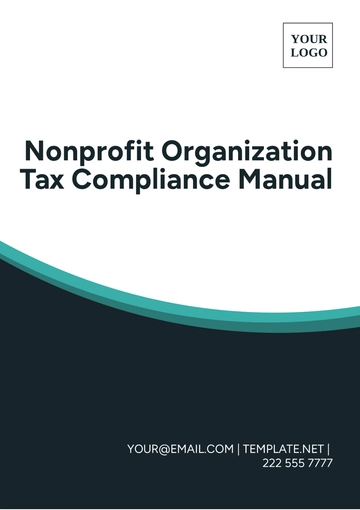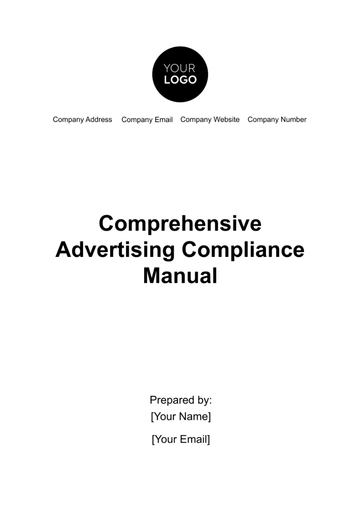Free Workplace Ergonomics Policy & Procedure Manual
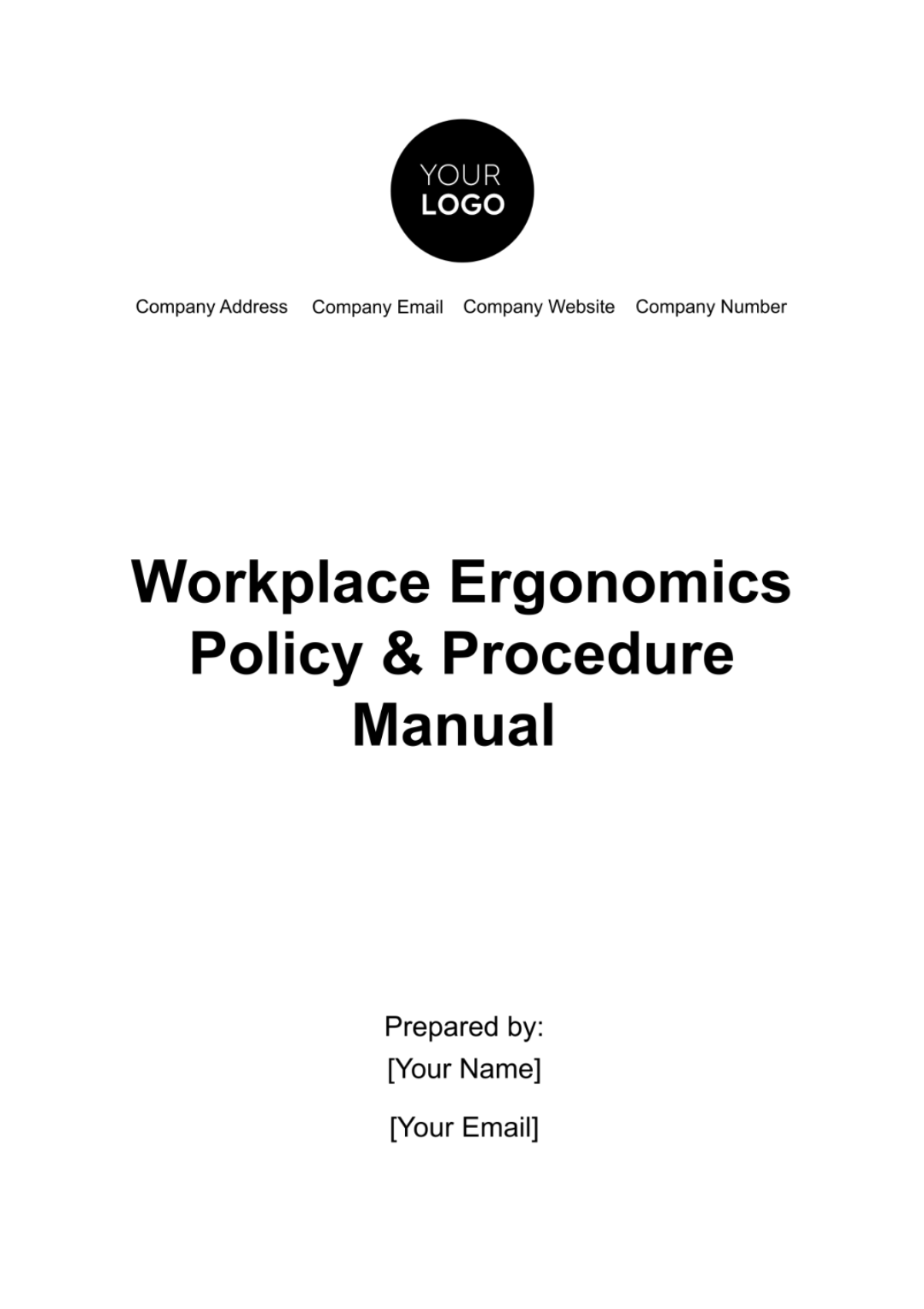
I. Introduction to Workplace Ergonomics
Ergonomics is the science of fitting workplace conditions and job demands to the capabilities of employees. The primary objective of our ergonomics policy at [Your Company Name] is to prevent musculoskeletal disorders (MSDs) resulting from physical strain, such as repetitive tasks, and to promote a healthier, more productive working environment. This manual outlines our approach to identifying, assessing, and mitigating ergonomic risks in the workplace.
II. Ergonomics Policy Statement
At [Your Company Name], our dedication to ensuring a safe and healthful work environment is unwavering. We understand that the key to a productive and satisfied workforce lies in the physical conditions of their workspaces. Recognizing this, we have committed to implementing a comprehensive ergonomics policy that serves the dual purpose of safeguarding our employees from musculoskeletal disorders (MSDs) and enhancing overall job performance.
Musculoskeletal disorders, often arising from repetitive motions, awkward postures, or prolonged exertion, can significantly impact an employee's health and ability to work effectively. By proactively addressing these issues through ergonomic design, we aim to curtail the prevalence of these disorders, thereby fostering a healthier, more vibrant workforce. This policy encompasses all employees, regardless of their employment status - whether they are part-time, full-time, or temporary staff - ensuring that each benefits from a workplace that prioritizes their physical well-being.
III. Roles and Responsibilities
The successful implementation of our ergonomic policy hinges on the collective effort and commitment of everyone in the organization, from management to each individual employee.
A. Management Responsibilities
Ensuring Compliance with Ergonomic Principles: Our management team plays a pivotal role in ensuring that all work areas adhere to established ergonomic standards. This involves regular reviews of workspace layouts, equipment, and work practices.
Resource Allocation: The provision of necessary resources, including budget allocations for ergonomic tools and equipment, and time for training sessions, is a critical function of our management. This ensures that the ergonomic initiatives are not just theoretical but are practically achievable.
Promoting Participation: Encouraging active participation from employees in ergonomic initiatives is essential. This includes motivating staff to engage in training sessions, provide feedback, and be proactive in identifying ergonomic improvements.
B. Employee Responsibilities
Adherence to Ergonomic Practices: Each employee is responsible for following the ergonomic guidelines and best practices laid out in this manual. This includes proper use of ergonomic tools, adhering to recommended postures, and taking breaks to reduce strain.
Active Participation: Employees are encouraged to actively participate in ergonomic assessments and training. This involvement is crucial for tailoring ergonomic solutions to their specific needs.
Reporting Concerns: Employees are expected to report any ergonomic concerns or discomforts to their supervisor or the ergonomics team. Prompt reporting can lead to quick interventions, preventing the escalation of ergonomic issues.
C. Ergonomics Team Responsibilities
Conducting Risk Assessments: The ergonomics team is tasked with conducting regular assessments to identify potential ergonomic risks in the workplace. These assessments are comprehensive and involve analyzing various work tasks and environments.
Solution Development and Implementation: Based on the findings from risk assessments, the ergonomics team develops and implements solutions to mitigate identified risks. This may include workstation adjustments, equipment upgrades, or changes in work processes.
Training and Education: A key responsibility of the ergonomics team is to provide training and education to employees. This includes organizing ergonomic workshops, creating educational materials, and ensuring that all staff members are informed about ergonomic principles and practices.
IV. Training and Education
A. Importance of Ergonomic Training
Incorporating ergonomics into the workplace is not just about physical changes; it's equally about ensuring that every employee understands the importance of ergonomics and how to apply ergonomic principles in their daily work.
At [Your Company Name], we believe that informed employees are the key to a proactive and safe workplace. Our ergonomic training programs are designed not only to educate but also to empower our employees with the knowledge to identify and mitigate potential ergonomic risks in their work environment.
B. Ergonomic Training Program Structure
The structure of our ergonomic training program is multi-faceted, aiming to address the diverse needs of our workforce.
Ergonomic Awareness Training:
This foundational training is mandatory for all employees. It covers basic ergonomic principles, the importance of good posture, the correct use of ergonomic tools, and strategies to prevent MSDs. The sessions are interactive and include practical demonstrations.
Role-Specific Ergonomic Training:
We recognize that different roles have different ergonomic needs. For instance, office staff face challenges different from those in the warehouse or manufacturing floor. Role-specific training is tailored to address these unique needs, focusing on the specific ergonomic risks associated with each job type.
Train-the-Trainer Program:
To foster a culture of continuous ergonomic learning, we implement a Train-the-Trainer program. Selected employees undergo intensive training to become ergonomic champions within their departments. These individuals are then responsible for providing ongoing guidance and support to their colleagues.
Ergonomic Training Schedule
Training Type | Frequency | Target Audience |
Ergonomic Awareness | Annually | All Employees |
Role-Specific Training | Bi-annually | Departmental Employees |
Train-the-Trainer | Quarterly | Selected Employees |
V. Ergonomic Risk Assessment
A. Assessment Process
Initial Assessment: Conduct an initial review of all workstations and job tasks to identify potential ergonomic risks.
Regular Assessments: Schedule periodic assessments to identify new risks or review changes in the workplace.
B. Risk Identification
Utilize tools such as checklists, observation, employee feedback, and injury data to identify ergonomic risks.
C. Risk Evaluation
Evaluate identified risks based on factors such as severity, frequency, and number of employees affected.
VI. Ergonomic Solutions
A. Workstation Design and Layout
Adjust workstations to fit the user, including chair height, desk height, and monitor placement.
Ensure that employees have enough space to change postures and move freely.
B. Equipment and Tools
Provide ergonomic tools such as keyboard trays, ergonomic mice, and footrests.
Regularly maintain and replace tools to ensure they are in good condition.
C. Task Design
Modify tasks to reduce repetitive motion, forceful exertions, and awkward postures.
Implement job rotation and breaks to reduce strain.
VII. Reporting and Documentation
Effective reporting and documentation are critical for the success of the ergonomic program. They provide a historical record of efforts and outcomes, which is invaluable for ongoing evaluation and improvement.
A. Ergonomic Assessment Reports
Following each ergonomic assessment, a detailed report is generated. These reports include observations, identified risks, and recommendations for improvements. They serve as a record of the current state of workplace ergonomics and a guide for future actions.
B. Injury and Discomfort Logs
Maintaining logs of ergonomic-related injuries and discomforts reported by employees is crucial. These logs help in identifying trends, problem areas, and the effectiveness of implemented solutions.
C. Training Records
We meticulously document all training sessions, including attendance, topics covered, and participant feedback. This documentation ensures compliance with our ergonomic policy and aids in evaluating the effectiveness of our training programs.
Ergonomic Documentation Overview
Document Type | Purpose | Storage Method |
Assessment Reports | Record findings and recommendations | Electronic Database |
Injury and Discomfort Logs | Track ergonomic-related incidents | Secure File System |
Training Records | Verify training compliance | Employee Files |
VIII. Review and Improvement Process
Our ergonomic program is dynamic and requires regular review and updating to ensure its continued effectiveness and relevance.
A. Annual Program Review
Each year, we conduct a comprehensive review of the ergonomic program. This review includes analysis of assessment reports, injury logs, training records, and employee feedback. It helps us identify successes, challenges, and areas for improvement.
B. Employee Feedback Mechanism
Employee feedback is a valuable source of information for improving our ergonomic program. We encourage employees to provide feedback through various channels such as surveys, suggestion boxes, and department meetings. This feedback is regularly reviewed and used to make informed adjustments to our program.
C. Continuous Improvement Plan
Based on the insights gained from the annual review and ongoing employee feedback, we update our ergonomic policies, procedures, and interventions. This continuous improvement approach ensures that our program evolves in line with the changing needs of our workforce and workplace.
IX. Ergonomic Policy Enforcement
Enforcing ergonomic policies is essential to ensure that the practices are integrated into daily work routines and that the workplace remains a safe and healthy environment.
A. Policy Compliance
We conduct regular ergonomic audits to monitor compliance with our policies. Non-compliance is addressed through additional training or workstation reassessment, as appropriate.
B. Corrective Actions
If repetitive non-compliance or ergonomic issues are identified, corrective actions are taken. These actions may range from additional targeted training to disciplinary measures, depending on the severity and frequency of the issues.
X. Conclusion
Our Workplace Ergonomics Policy & Procedure Manual is a comprehensive guide that outlines our commitment to creating a safe and ergonomic work environment. Through diligent application of these policies and procedures, we aim to reduce ergonomic-related injuries, enhance employee well-being, and improve overall productivity at [Your Company Name].
- 100% Customizable, free editor
- Access 1 Million+ Templates, photo’s & graphics
- Download or share as a template
- Click and replace photos, graphics, text, backgrounds
- Resize, crop, AI write & more
- Access advanced editor
Welcome to the ultimate solution for workplace comfort and productivity – the Workplace Ergonomics Policy & Procedure Manual Template by Template.net. Crafted for efficiency, it's fully editable and customizable to suit your organization's unique needs. Utilize our Ai Editor Tool to effortlessly tailor ergonomic policies for a safer and healthier work environment.


